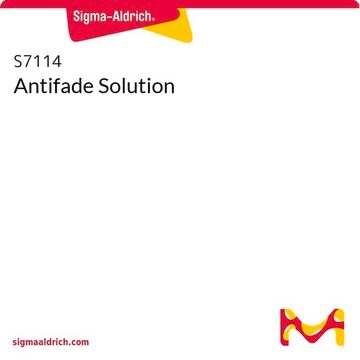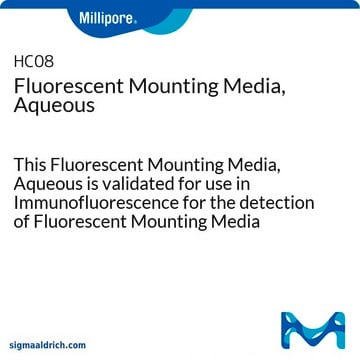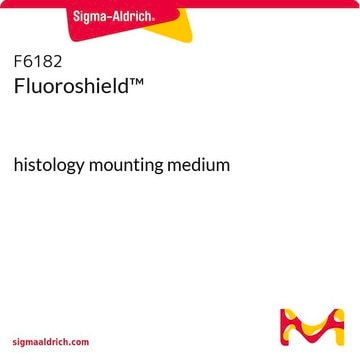MBD0020
DAPI ready made solution with Antifade
For Nuclear counterstain in Fluorescence Microscopy
Sinónimos:
4′,6-Diamidino-2-phenylindole dihydrochloride, DAPI Dye, DAPI Stain, DNA Content Counterstain, 2-(4-Amidinophenyl)-6-indolecarbamidine dihydrochloride, DAPI dihydrochloride
About This Item
Productos recomendados
Quality Level
form
liquid
storage condition
protect from light
technique(s)
DNA extraction: suitable
DNA sequencing: suitable
PCR: suitable
fluorescence
λex 340 nm; λem 488 nm (nur DAPI)
λex 364 nm; λem 454 nm (DAPI-DNA-Komplex)
suitability
suitable for nucleic acid staining
shipped in
dry ice
storage temp.
−20°C
SMILES string
Cl.Cl.NC(=N)c1ccc(cc1)-c2cc3ccc(cc3[nH]2)C(N)=N
InChI
1S/C16H15N5.2ClH/c17-15(18)10-3-1-9(2-4-10)13-7-11-5-6-12(16(19)20)8-14(11)21-13;;/h1-8,21H,(H3,17,18)(H3,19,20);2*1H
InChI key
FPNZBYLXNYPRLR-UHFFFAOYSA-N
¿Está buscando productos similares? Visita Guía de comparación de productos
General description
Application
Biochem/physiol Actions
Features and Benefits
- Protects dyes from fading during imaging.
- Ready-to-use liquid.
- Easy to use Dropper vial application.
- Stained sample are stable for longer time period.
- Maintains fluorescence signal-little to no quenching.
Physical form
hcodes
pcodes
Hazard Classifications
Aquatic Chronic 3
Storage Class
10 - Combustible liquids
wgk_germany
WGK 2
flash_point_f
Not applicable
flash_point_c
Not applicable
Certificados de análisis (COA)
Busque Certificados de análisis (COA) introduciendo el número de lote del producto. Los números de lote se encuentran en la etiqueta del producto después de las palabras «Lot» o «Batch»
¿Ya tiene este producto?
Encuentre la documentación para los productos que ha comprado recientemente en la Biblioteca de documentos.
Los clientes también vieron
Nuestro equipo de científicos tiene experiencia en todas las áreas de investigación: Ciencias de la vida, Ciencia de los materiales, Síntesis química, Cromatografía, Analítica y muchas otras.
Póngase en contacto con el Servicio técnico








